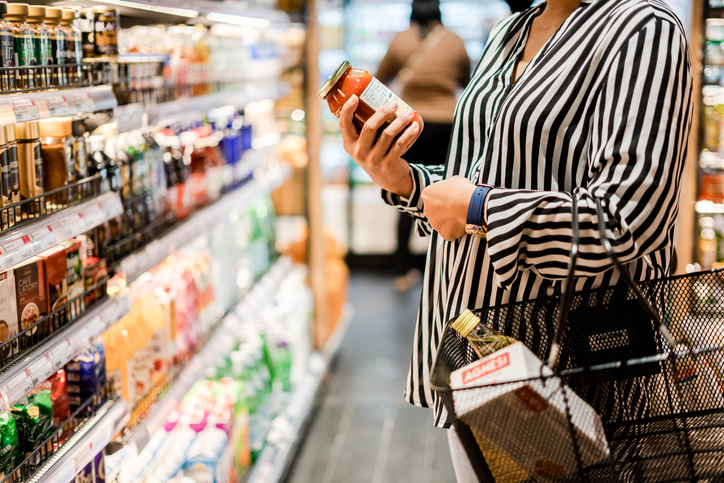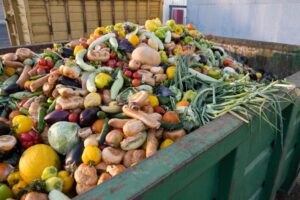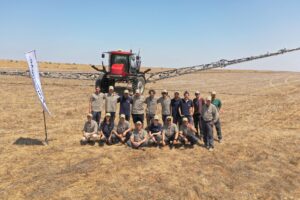When it comes to measuring socio-environmental impact, the agrifood sector remains in largely uncharted waters.
There are a plethora of different methods and metrics. As consumers and investors alike expect food and farming to show their sustainability credentials, the need for broadly accepted and accurate data standards is becoming critical.
New York’s HowGood is one of several companies using technology in an effort to take the industry forward. The New York startup is able to collate broad swathes of impact-related data from different parties and feed it into its software platform, offering users the chance to both measure their own impact and compare themselves to other stakeholders.
HowGood recently raised $12.5 million in a funding round led by Titan Grove, with participation from FirstMark and other existing investors, to scale its impact intelligence platform and secure more industry partners in the US and Europe.
AFN caught up with HowGood’s chief innovation officer Ethan Soloviev (ES) — who also happens to be a regenerative farmer — to find out more.
AFN: Where did the founders get the idea for HowGood?
ES: HowGood was founded in 2007 by brothers Alexander and Arthur Gillett. The idea came to them when they realized the challenge within the food industry to deliver real impact data. The data to measure environmental and social impact was abundant but many in the industry had different implications and used different methodologies to determine what was good and what was bad. This made it difficult for farmers and food companies to not only measure their own impact, but to see how they compared to others. In my personal experience as a farm owner, the tedious task of sorting through individual studies and research impedes making informed, sustainable changes. And for a larger food company, it’s just as difficult.
Their goal with the idea of HowGood was to aggregate all this data into one database to provide all the players in the food industry with a simple way to comprehend their current impact and see where they can make improvements to become more sustainable. From this idea, HowGood continued to improve product sustainability, originally focusing on helping consumers and their decision-making by rating brands and products in grocery stores, but eventually expanding to R&D and procurement teams within food companies as well.
From this transition, HowGood’s sustainability intelligence software Latis was born in 2020 with the world’s largest database on ingredient and product sustainability.
AFN: What problem is HowGood trying to solve?
ES: The problem we are trying to solve at HowGood is the same one that’s been plaguing the food industry for years. There is a lack of transparency and understanding of how to take action toward sustainable impact. Statistically, consumers prefer to shop sustainably more than ever and are holding food companies accountable for their environmental and social impact. These brands and retailers need a solution that allows them to quickly and accurately measure holistic impact — not just their carbon emissions or packaging impact — and to get really granular to make supply system changes on an ingredient level for maximum impact. Latis provides companies with actionable insights to take immediate steps toward improving the sustainability of their products across a comprehensive set of metrics covering both environmental and social impact, using exclusive data.
AFN: What is HowGood’s revenue model?
ES: We offer subscription-based access to our sustainability intelligence platform, Latis. Additional services such as product ratings and attributes for retailers, restaurants, and food service providers who are not yet using the platform for recipe analysis are priced on a per-SKU or per-ingredient basis. As an impact-driven company, we are motivated by bringing transparency into the food system for as many people as possible; this very much factors into our pricing strategy and will continue to do so.”
AFN: Who do you consider to be your closest competitors and how is HowGood differentiated from them?
ES: The sustainability industry is rapidly growing to answer the demand, and there are a lot of different solutions on the market for gaining insight into your supply chain and total impact. One of the areas where HowGood stands out is in the breadth of our coverage. We are the only solution on the market providing food brands and retailers with ingredient-level insights spanning more than 33,000 ingredients on both environmental and social impact.
[Also] there is no product on the market that can support procurement teams in researching ingredient sustainability specs and identifying new, more sustainable suppliers at the scale that Latis delivers.
AFN: How is HowGood deploying the capital it raised earlier this year?
ES: In addition to the expansion of Scope 3 greenhouse gas reporting, as well as supplier-specific data and on-pack sustainability claims, [we’ll] expand other metrics available in Latis, most recently with One Planet Business for Biodiversity’s (OP2B) regenerative agriculture metrics and the EU’s EcoScore and Nutri-Score scoring systems. Through strategic research and implementation, the integration of these third-party metrics provides HowGood customers with uniform metrics to compare their product impact against internal goals and industry averages while also providing clear steps to identify the most impactful changes to make in their formulations and brings much-needed transparency to the quickly-changing food industry.”
AFN: How does your background in regenerative farming relate to your work with HowGood, if at all?
ES: It definitely relates! My personal experience owning a sheep, apple, and chestnut farm in upstate New York keeps me grounded in the daily realities of the importance of our work. As a farmer, I am constantly in the mode of researching and learning new methods to improve the health of our soil and waterways to regenerate not only the land, but our community as well. This is the goal that we are working towards with every new partner that we bring on at HowGood, and keeping that goal at the forefront of our work helps us all maintain a level of inspiration and innovation that makes incredible things possible. Spending time with my hands in the dirt keeps me grounded in how critical it is that HowGood is successful in shaping and changing our food system for the better. It also gives me continual insight into the complexities that those in the industry are facing.
AFN: From your perspective, what are some of the most interesting ways you see corporates and brand owners engaging with regenerative ag, including through their use of the HowGood platform? Do you think they really ‘get it’? Or are some of them just trying to tick a sustainability box?
ES: There is a diverse array of approaches as companies begin realizing that ‘sustainability’ is no longer enough.
The food industry has come a long way in understanding the importance of sustainability and its role and responsibility in changing ‘business as usual.’ That said, what we are seeing is many companies are just using the word ‘regenerative’ because it’s hot right now. Many others are well-intentioned, and really trying to understand regeneration, but end up designing programs just like they did ‘sustainable ag.’ A few are deeply transforming how they think and work, from the C-suite through to individual farmer and rancher relationships.
On the brand side, General Mills is working to advance regenerative agriculture on 1 million acres of farmland by 2030, and Cargill has committed to 10 million acres. Danone has created an open-source regenerative agriculture scorecard as a tool for farmers to help transform their operations toward regenerative.
Organizations like Regrow Ag and industry alliances like OP2B are helping to provide metrics and measure progress toward regenerative goals. Farmer collectives such as Regen 10, launched at COP26, aim to scale regenerative agriculture by mobilizing farmers across the globe.
There are champions of regeneration across the industry, and what Latis has done is give them the tools they’ve been needing to deliver on their ambitions. With cost-cutting constantly being demanded, Latis has helped R&D and procurement teams not have to sacrifice their regen commitments, but rather find alternatives so that the health of our planet doesn’t have to come in second.
And the good news is, no matter whether you are deeply dedicated to sustainability yourself, or you’re responding to consumer demand for it, the end result is good for our planet and people.















Sponsored
International Fresh Produce Association launches year 3 of its produce accelerator